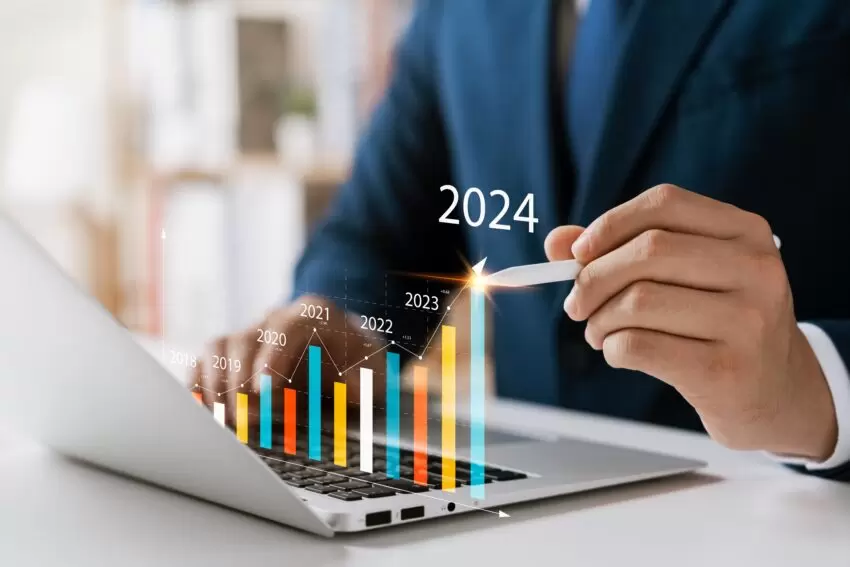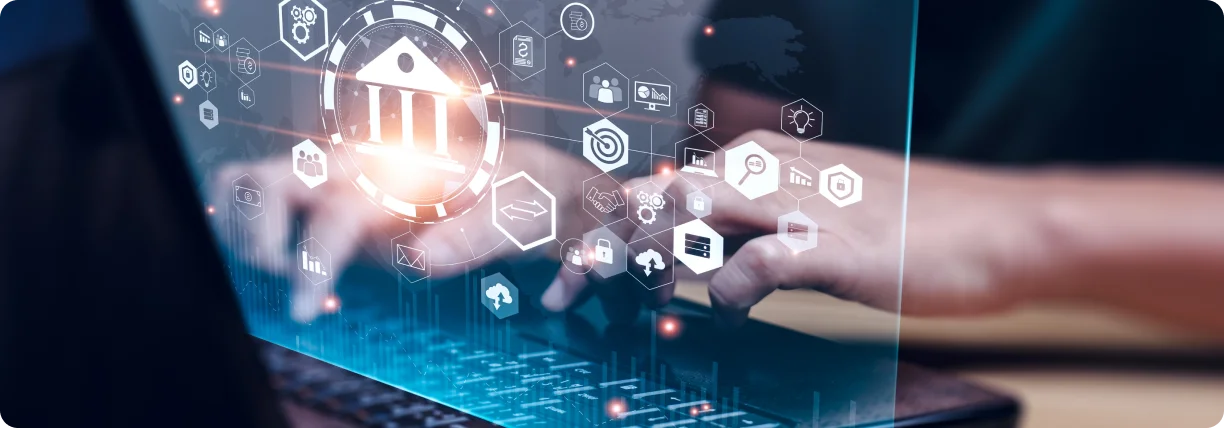Addressing the Credit Gap: Meeting Unmet Credit Needs in Southeast Asia
Due to strong economic growth and rising consumer demand, Southeast Asia is experiencing a significant rise in loan demand. Despite this, conventional lending methods are finding it challenging to satisfy the area's changing credit demands. Individuals, particularly those from impoverished regions, suffer considerable credit impediments, and debt collection inefficiencies worsen the issue. Therefore, closing this credit gap is essential to maintaining the economic momentum in the area and guaranteeing financial inclusion for all societal groups.
Nov 06 ,2024 - min readCurrent Situation of Traditional Lending and Debt Collection
Increasing Demand for Consumer Credit
As Southeast Asia's economy expands, so will the need for consumer credit. With a GDP growth rate above the world average, this area has become an attractive destination for consumer spending. This is further fueled by the region's young population, expanding urbanization, and rising earnings.
The increasing middle class seeks credit to fund education, housing, and personal necessities. However, traditional banks frequently need to meet these new expectations due to their inflexible structures and risk-averse practices.

Challenges with Traditional Consumer Lending
Limited Access to Credit for Consumers
Getting a loan from a traditional bank is one of the biggest obstacles for customers, especially those without collateral or established credit histories. Many consumers, particularly first-time borrowers, are unable to provide the necessary documentation and security required by these organizations. As a result, individuals face high rejection rates and lengthy approval processes, restricting their capacity to obtain necessary credit for personal growth and development.
High Rejection Rates and Long Approval Processes
Traditional lending institutions' approval procedures can often be lengthy and bureaucratic. Banks demand extensive documentation and collateral to determine a borrower's creditworthiness, resulting in high rejection rates and lengthy loan application processes. This wait widens the credit gap, deterring many prospective borrowers from applying.
Inefficiencies in Debt Recovery
Debt collection is still a severe concern to traditional lenders. Many still use manual procedures, which cause delays and inefficiencies. Identifying and managing delinquent accounts is challenging without automated tools and data analytics, resulting in more excellent default rates and financial losses for lenders.
The Growth of Digital Lending in Southeast Asia
Overview of the Rise of Digital Lending Platforms
Digital lending platforms have emerged as a transformative factor in Southeast Asia's financial system to address the limits of conventional lending. These platforms use technology to expedite lending, making loans available and affordable to a broader range of consumers. Digital lending includes a variety of approaches, including peer-to-peer (P2P) lending, online lenders, and fintech-driven microfinance institutions, all of which are gaining popularity in the area.

Compared to traditional mes, digital lending platforms have various advantages, including faster approval processes, reduced operational costs, and the opportunity to reach underrepresented communities. These platforms can lend money to people and companies who may not be eligible for conventional bank loans because they use technology to evaluate credit risk and streamline procedures. Credit democratization is critical for promoting financial inclusion and boosting Southeast Asia's economy.
Factors Driving the Growth of Digital Lending
Several factors have contributed to the rapid expansion of digital lending in Southeast Asia:
Increased Internet and Smartphone Penetration
Southeast Asia now has access to digital financial services because of the region's high smartphone and internet usage. This connectivity allows consumers in rural places to use Internet lending systems quickly. As internet use and mobile usage grow, the region's online economy is estimated to reach $300 billion by 2025, creating new potential for digital lenders.
Growing Middle Class and Consumer Needs
The growing middle class has increased demand for consumer credit as more individuals seek loans for personal reasons, including education, housing, and lifestyle enhancements. Digital lending platforms offer these customers flexible and convenient financing choices that are frequently unavailable through traditional banks.
Government Policies Supporting Financial Inclusion
With supporting policies and regulatory reforms, Southeast Asian countries are aggressively advancing financial inclusion. The ASEAN Financial Integration Framework and other national financial inclusion policies aim to improve underprivileged people's access to credit.
Governments are fostering an atmosphere favorable to the growth of fintech businesses as they realize the significance of digital financial services in accomplishing their financial inclusion goals. Open banking programs, digital identity frameworks, and regulatory sandboxes are a few strategies to encourage the expansion of digital lending in the area.
The Role of Loan Management Systems (LMS)
Overview of Loan Management Systems
Loan Management Systems (LMS) are complex software systems that automate and streamline the loan process, from origination to repayment. These systems combine many operations, such as loan application processing, underwriting, credit scoring, and disbursement, onto a single platform.

LMS offers a consolidated and automated approach to loan management, decreasing dependency on human procedures while increasing operational efficiency. Using technology, LMS improves loan processing accuracy and speed, allowing financial institutions to serve clients better and manage their loan portfolios.
Benefits of LMS for Financial Institutions
Streamlined Loan Origination and Approval Processes
LMS streamlines the loan application and approval procedure, saving time and effort. This efficiency allows lenders to manage larger applications while increasing client satisfaction. Automated processes assist applicants through the process, from document submission to approval, eliminating delays and mistakes. Streamlining these procedures improves the borrower experience while lowering lending operating expenses.
Enhanced Risk Management and Credit Scoring
LMS uses advanced analytics and machine learning algorithms to deliver accurate credit scores and risk assessment, allowing lenders to make educated lending decisions and avoid potential hazards.
LMS may create detailed risk profiles for each applicant by examining various data points such as credit history, income, and spending patterns. This data-driven strategy enhances credit decision accuracy and enables lenders to detect high-risk applicants before issuing loans.
Automatic Workflow and Real-Time Tracking
LMS provides automated procedures to guarantee that loans are processed consistently and efficiently. When loan performance and status are tracked in real time, the lending institution becomes more transparent and accountable.
Borrowers receive automated warnings and updates regarding their loan status and impending installments, decreasing the possibility of missed payments and defaults. Real-time monitoring also allows lenders to address possible concerns ahead of time and change their strategy appropriately.
The Importance of Debt Collection Management Systems (DCMS)
Definition of Debt Collection Management Systems
Debt Collection Management Systems (DCMS) are specialized software systems that improve debt recovery. These tools allow for more effective engagement with delinquent borrowers, track late accounts, and use data-driven initiatives to increase recovery rates.
DCMS integrates several functions into a single platform, such as data analytics, real-time tracking, and automated communication. Using technology, DCMS improves the efficiency and efficacy of debt collection activities, lowering reliance on human procedures and increasing total recovery rates.
Advantages of DCMS for Improving Recovery Rates
Automated Communication and Reminders
By automating the delivery of alerts and payment reminders to past-due debtors, DCMS guarantees prompt and reliable communication that promotes repayment. Automated communication eliminates the need for human follow-ups and increases the possibility of contacting borrowers quickly. Contact is more successful when personalized with reminders and messages specific to each borrower's circumstances.
Real-time tracking of delinquent accounts
DCMS gives lenders real-time visibility into the status of overdue accounts, allowing them to monitor and manage their collection activities better. Real-time surveillance enables lenders to discover overdue accounts early and take proactive steps to rectify them. Thanks to this visibility, lenders can also focus their collections efforts according to the level of delinquency and the possibility of recovery.
Data Analytics for Improved Decision-Making
Lenders may make data-driven decisions that improve their debt recovery tactics by utilizing advanced analytics in DCMS, which provide insights into borrower behavior and recovery patterns.
They may maximize their collection operations by identifying the most effective techniques and examining data on recovery rates, communication efficacy, and payment trends. Data-driven decision-making increases the chance of successful outcomes and improves total debt recovery efficiency.
LendVero: Bridging the Credit Gap with Comprehensive Solutions
Introduction to LendVero
LendVero is at the forefront of tackling Southeast Asia's credit gap with innovative and comprehensive solutions. As a significant provider of financial technology services, LendVero uses cutting-edge technology to improve loan administration and debt collection operations, allowing for greater financial inclusion in the area.
LendVero aims to close the credit gap by making financial solutions accessible and cheap to underrepresented groups. By fusing cutting-edge technology with a customer-focused philosophy, LendVero wants to change the lending environment in Southeast Asia and promote the area's economic development.
LendVero's Loan Management System
The Loan Management System from LendVero simplifies the lending process and comes with several essential features and advantages.
- Loan Origination and Approval: The technology streamlines the loan origination process, allowing loan applications to be approved quickly and efficiently. Applicants may complete the entire procedure online, from document submission to approval, which saves time and effort in obtaining a loan.
- Advanced Credit Scoring and Risk Assessment: LendVero's advanced algorithms deliver precise credit scoring and risk assessment, lowering the possibility of defaults. The technology examines various data points to create complete risk profiles, allowing lenders to make more educated loan decisions.
- Automated Workflow with Real-Time Monitoring: The system guarantees that loan processing runs smoothly and consistently, with loan performance monitored in real time. Automated alerts and notifications keep borrowers updated on their loan status and forthcoming installments, lowering the probability of missed payments and defaults.
LendVero's Debt Collection Management System
LendVero's Debt Collection Management System has innovative features that improve the debt collection process:
- Automated Communication and Payment Reminders: The system provides timely and consistent communication with delinquent borrowers, which increases recovery rates. Automated reminders and alerts are tailored to each borrower's situation, boosting the possibility of payback.
- Real-Time Account Tracking: LendVero tracks delinquent accounts in real-time, allowing for more effective collection attempts. Depending on the degree of the delinquency and the chance of recovery, lenders can prioritize their efforts and monitor the status of past-due accounts.
- Data-Driven Decision Making: Advanced analytics provide insights into borrower behavior, enabling lenders to fine-tune their recovery methods. Lenders may enhance their collections activities by examining data on payment trends, communication effectiveness, and recovery rates.
LendVero's expansion in Southeast Asia
Recognizing the substantial credit gap in Southeast Asia, LendVero plans to expand its regional activities. With a strategic focus on increasing financial inclusion, LendVero intends to bring innovative solutions to a larger audience, bridging the credit gap and supporting economic growth.
LendVero's development goals include collaborations with local financial institutions, fintech startups, and government agencies to provide specialized solutions that match the specific demands of the Southeast Asian market. By utilizing its knowledge and technology, LendVero wants to make the region's financial ecosystem more accessible and efficient.
Conclusion
Addressing the consumer credit gap in Southeast Asia is critical to sustaining the region's economic growth and financial inclusion. Digital lending is rising, and innovative loan and debt collection management systems are being used to address customers' unmet credit demands.
LendVero's complete solutions provide a viable path into the future, with the potential to extend their reach and influence throughout Southeast Asia, further eliminating the credit gap and promoting a more inclusive financial climate. LendVero's dedication to financial inclusion, together with its track record, positions it as a critical partner in this revolutionary path.
